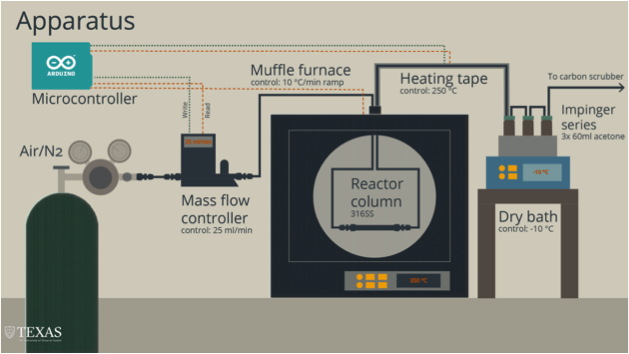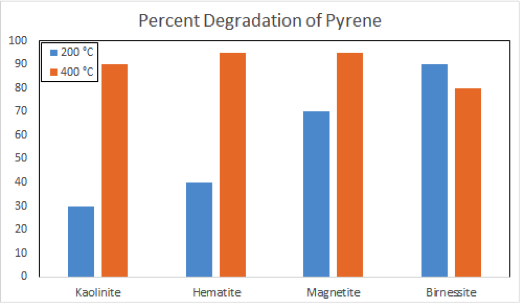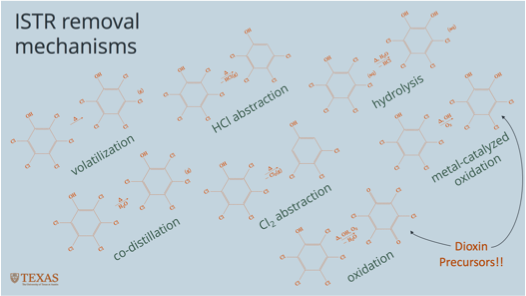

 Research Project Full Title: Mechanisms and Modeling of Contaminant Reactions during Thermal Remediation
Research Project Full Title: Mechanisms and Modeling of Contaminant Reactions during Thermal Remediation
Principal Investigator(s): Lynn Katz, Howard Liljestrand, Charles Werth
Researchers: Justin Davis, Cameron Oden
Sponsor(s): Terratherm
Full Abstract:
In situ thermal remediation (ISTR) has become a popular restoration technique largely because it effectively treats a wide array of organic pollutants in-situ and it has the ability to achieve both phase transfer and compound destruction. But while much of the literature has demonstrated ISTR’s effectiveness, few studies have attempted to predict and optimize ISTR performance. The difficulty in modeling stems from the complex thermal remediation reaction network, where several removal mechanisms compete in parallel. The predominance of each mechanism depends on operating conditions, soil properties, and the presence of mineral catalysts. The current work uses pentachlorophenol and pyrene as case-studies, varying system variables and identifying removal mechanisms based on byproduct yields. The goal is elucidate the mechanisms of compound destruction and formation as a function of system variables to inform and simplify models, as well as advance current understanding of ISTR systems.
